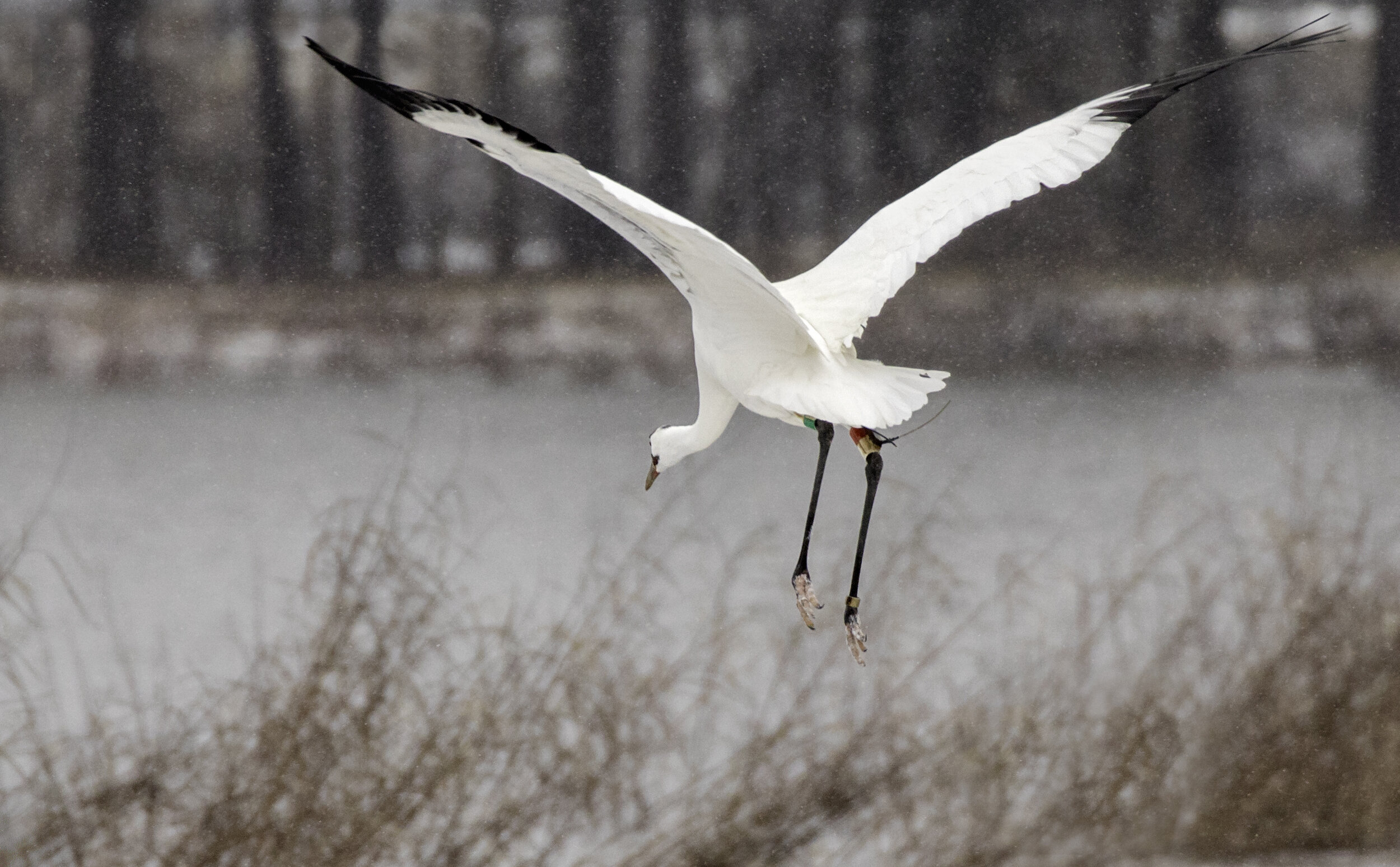Return of the Whooping Crane to Alabama
Three stately white birds with red crowns and black primary feathers flap silently as they head south from their summer home in Wisconsin, headed for the Gulf Coast of Florida where they will spend the winter. They had taken a similar path two years before, following an ultralight airplane piloted by what seemed to them a member of their own species. With the ultralight no longer accompanying them, they are looking for a place to alight for the night when they see a small wetland surrounded by harvested corn just north of the Tennessee River and Wheeler National Wildlife Refuge. They set their wings and land.
Sometime over the next few days, they note a small party of humans approaching and they move slowly away. Little did they know or care, the humans were participating on the 2004 Wheeler National Wildlife Refuge Christmas Bird Count on December 18. It was an historic event…they were Whooping Cranes and members of their species had not been seen in Alabama since 1899.
Whooping Cranes, unlike many other waterbird species, were probably never numerous with peak estimated populations of around 10,000. They nested over much of the northern United States and Canada and migrated through much of the U.S. to their wintering grounds in the southern U.S. By the 1940’s their numbers had declined precipitously to only 15-20 birds when conservation measures aimed at increasing their populations were initiated. Thankfully, these measures resulted in an increase in numbers and by the 1990’s, 500-600 birds were migrating from their nesting grounds in and near Wood Buffalo National Park in northwest Canada to winter along the Gulf Coast of Texas.
Realizing that Whooping Cranes once occurred in eastern North America the Whooping Crane Eastern Partnership (WCEP), a group of non-profit organizations and government and state agencies, was formed in 1999. Its purpose is to facilitate the restoration of that migratory population as an integral part of the overall recovery of the species. Member organizations conduct a number of research, educational and management actions throughout eastern North America.
Alabama has benefitted directly from WCEP programs. Since the appearance of the three cranes in 2004, Alabama has become a haven for migrating and wintering Whooping Cranes. Many now spend all or a portion of their winters here. North Alabama appears particularly attractive to them. They have been seen in Lauderdale, Lawrence, Limestone, Morgan, Madison and Cherokee counties.
Wheeler National Wildlife Refuge, with its 35,000 acres of wetlands, forests and cropland, has provided a sanctuary for migrating and wintering Whooping Cranes since at least 2004. The number of Whooping Cranes using the Refuge annually varies from 10-20 birds with a high of 26. From their primary roost sites in the Refuge’s shallow waters surrounding Flint Creek Island and Garth Slough, they spend much of the day foraging and loafing in Garth Slough, Limestone Bay, in the Tennessee River backwaters off White Springs Dike and often around the Refuge Visitor Center and Wildlife Observation Building. In late afternoon, prior to making their way to their roost site, upwards of 10,000 Sandhill Cranes gather around the Wildlife Observation Building. It’s an awesome challenge sorting through all those Sandhills for Whooping Cranes.
Accept that challenge and join us for the next Crane Festival scheduled for January 10-12, 2024!
By Dwight Cooley

